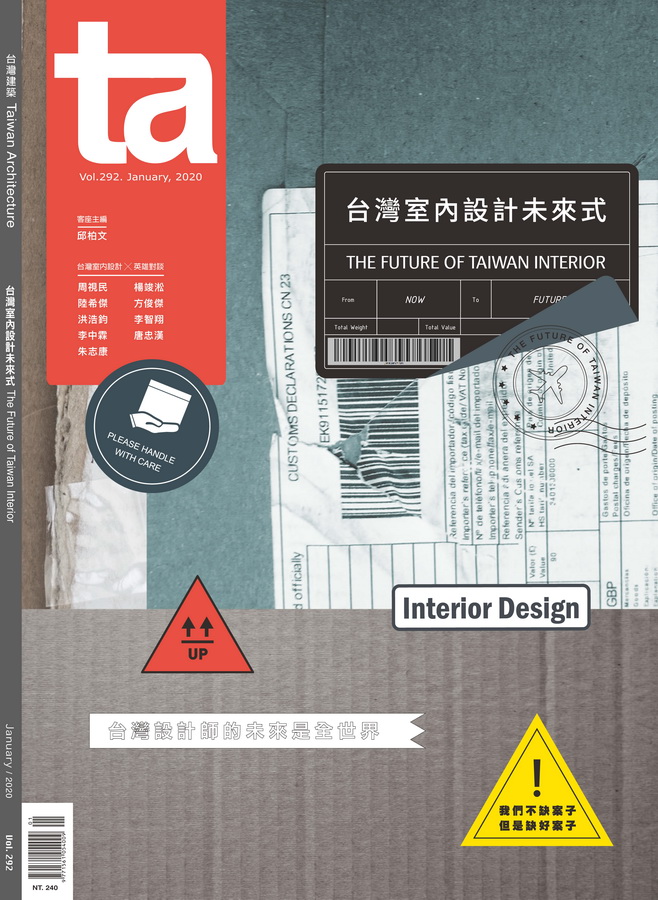魚河護林員住所Fish River Rangers Accommodation
共好×設計 Design for the Common Good 台灣建築雜誌2022年6月 Vol.321

作品檔案2095
魚河護林員住所Fish River Rangers Accommodation
團隊/Team:南澳大學/ University of South Australia
網絡/現場計畫網絡/ Live Projects Network;議題 Issue:文化資產/Cultural Heritage
編輯/Editing:Shannon Turlington;翻譯/Translation:陳盈棻/Ying-Fen Chen
位於北澳偏遠的魚河工作站,這一座原住民護林員住所的升級計畫,由南澳大學設計實構學程的師生所設計執行,回應舊住所沒有處理的氣候與文化議題。在升級計畫之前,護林員們居住在帳篷式的結構物內,其材質不但無法抵抗炙熱的陽光、熱帶暴雨和蚊蟲,也無法提供不同性別使用者在視覺上的隱私。新的設計包括:反射性的鋼製屋頂、落地式防蟲紗窗、內設個人儲藏空間的高架床以及懸吊式風扇,提供了隔熱、通風、防蟲等方面的改善,也明顯提升住所的舒適度、便利性和隱私性。比起昂貴的獨立電力空調系統,這個計畫也提供了一個可行且合算之偏遠熱帶另類住所的典範。
The Fish River Aboriginal ranger accommodation upgrade on the remote Fish River Station, Northern Territory, Australia, is a design/build project undertaken by staff and students from the Design Construct program at the University of South Australia that aims to improve both climatic and cultural responses that the former accommodation did not address. Prior to the upgrade, rangers were accommodated in fabric-roof tent structures that did not protect against intense sun, tropical downpours, and insects nor provide visual privacy, particularly for different gender groups. Reflective steel roofing, floor-to-ceiling insect screening, and individual raised-bed spaces with personal storage and ceiling fans improved thermal insulation, ventilation, and insect protection, which significantly enhanced the personal comfort, amenity, and privacy of the rangers. The project exemplifies a viable, cost-effective alternative for remote tropical accommodations compared to air-conditioned transportables that depend on costly stand-alone power systems.
理念
在殖民傳統和短視近利的經濟驅動之下,澳洲社會長久以來缺乏對於偏遠原住民社區的理解與同理心,導致原住民社區的住宅與空間規劃皆以西方標準模式為主。不僅空間過度擁擠、缺乏隱私,更不符合在地的文化習性,在設計上也缺少回應特定氣候條件的韌性。魚河計畫旨在提供當地原住民一個適居的機會,讓他們能恢復並振興在地文化與環境,甚至提出熱帶住宅的另類模式。
Cause
There has been a considerable lack of understanding of and empathy with the living conditions of remote Aboriginal communities driven by colonial traditions and economic expediency where community housing and planning are modeled on standardized Western patterns. Community houses are, as a consequence, culturally inappropriate in terms of overcrowding and privacy and poorly designed to respond to particular climatic conditions. The Fish River project aimed to give Aboriginal people an opportunity to live on Country, to rehabilitate and reinvigorate both the culture and the environment, and to propose an alternative model of tropical housing.
方法
奠基在過去與偏遠地區原住民合作的經驗上,此計畫在方法學上遵從幾個清楚的步驟,包括:身臨其境、(向業主與利益關係者)廣泛諮詢,並鼓勵參與本案的學生,思考有別於一般熟悉案例的創新設計與構築方案。基於之前設計實構學程針對偏遠地區原住民建成環境改善的研究,本計劃投注大量的時間於基地參訪,並透過與當地原住民護林員共同生活和合作的過程,進一步了解並處理他們對於住所的需求。本計畫也對原住民土地和海洋公司(Indigenous Land and Sea Corporation, ILSC)進行訪談,藉此完成適於文化、氣候條件與環境等面向的最終方案。
Method
The project methodology was based on a number of clear procedures: immersive, broad consultation with clients and stakeholders; previous design/build experience working with remote indigenous communities; and encouragement of students to think beyond familiar references and explore innovative design and construction solutions. On the basis of research undertaken by the Design Construct program investigating best-practice models for effective consultation toward improving built environment outcomes for remote indigenous communities, the project invested considerable time visiting, living and working with, and talking to the Aboriginal rangers on-site to understand and address the needs for the accommodation. The program also consulted with the Indigenous Land and Sea Corporation (ILSC) to achieve a culturally, climatically, and environmentally appropriate outcome.
影響
魚河計劃已成為此類設計實構案例的典範,它不但吸引許多學生參與,也在既定的期程與預算內完成,獲得在地使用者以及建築專業社群正面的評價。一個計畫真正的成功需要歸於持續且全面的使用後評估,來驗證整體的成果,此案雖然還沒有到這個階段,但該案最終能需要對主要財務關係人與原住民倡議者ILSC負責。
Impact
The Fish River project has been an exemplary design/build project engaging numerous satisfied students, completed on time and budget, and received positive responses from end-users and the architectural profession. The true success of this project relies on a continuing, comprehensive post-occupancy evaluation, which has not progressed sufficiently to verify overall success. Project accountability is maintained relative to results through reporting by the ILSC as the main financial stakeholder and proponent of benefits for indigenous peoples.
提示
儘管設計實構學程具有處理社會、環境、與文化議程的使命,它主要仍是一個教育計畫,旨在引介學生於面對真實世界中的議題時,尋求實際可行的方案。魚河計劃提供學生一個難得的機會,他們可以與原住民社區共事、參訪澳洲的偏遠地區、遠離舒適與安全的都市生活,並讓學生對自己與他人負責,證明他們的努力不亞於專業建築師。
Takeaways
Although the Design Construct program has a social , environmental, and cultural agenda, it is primarily an education program aimed at engaging university students in real-world problems requiring real-world solutions. The Fish River project exemplifies this by giving students the opportunity to engage with indigenous communities, travel to remote parts of Australia, be responsible for themselves and one another away from the comforts and security of city life, and prove that their efforts are equal with professional architects.
(完整作品內容請參考《台灣建築》2022年6月號,Vol.321)













